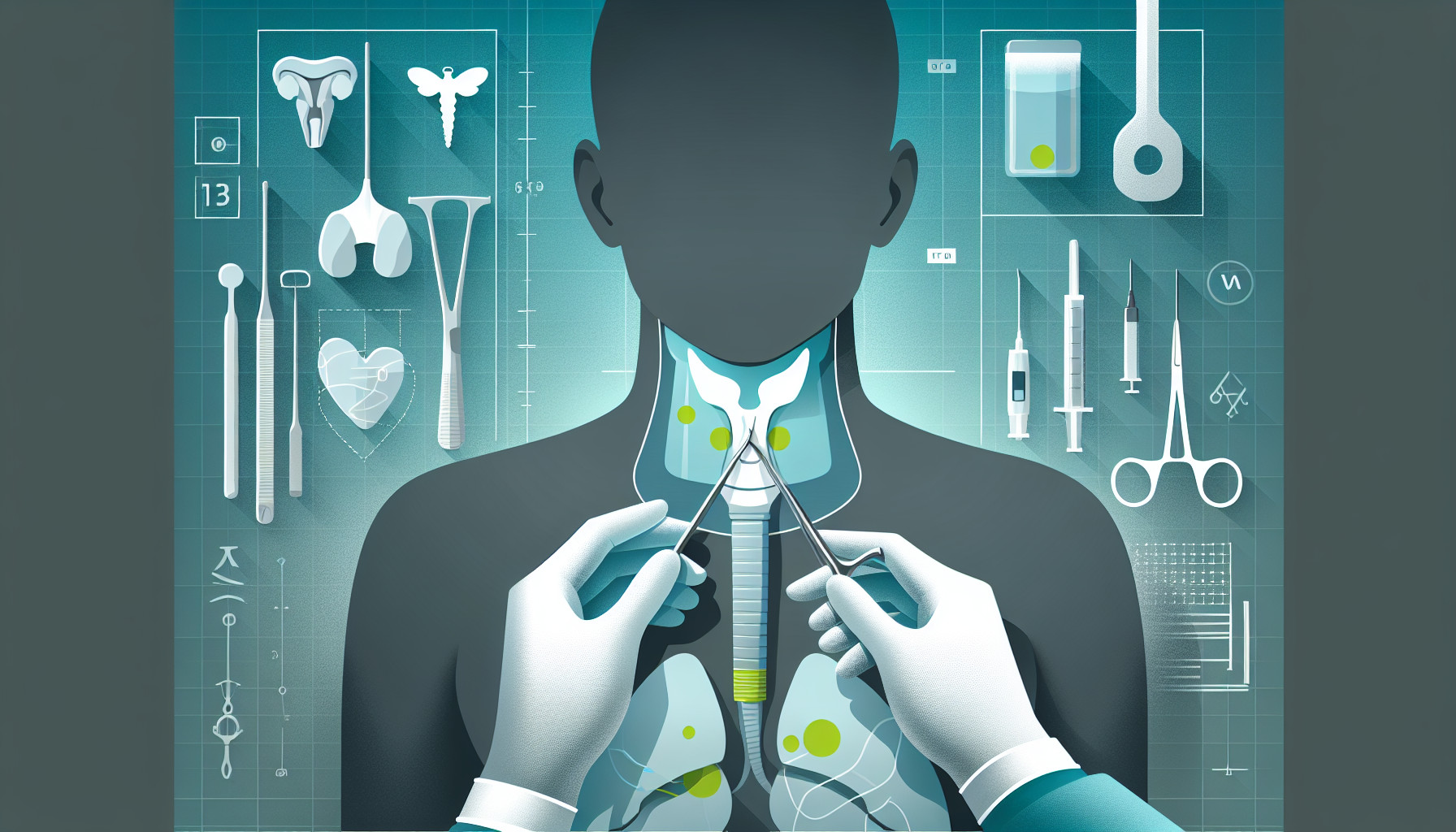Our Summary
This research paper examines a surgical method called the Gasless Unilateral Axillary Approach (GUA) for removing thyroid glands. This technique has several benefits including a clear view for the surgeon, easy handling, safe results, and no visible scarring for the patient. The researchers watched 150 recordings of this surgery to note important features and any variations that occurred.
The study found that the GUA technique, which is performed from the opposite side to the thyroid, can make it hard to spot certain anatomical structures, especially if there are abnormalities in the neck on the opposite side. The paper discusses these challenges and suggests strategies to overcome them, particularly for surgeons who are new to the procedure.
The authors conclude that because of the complex interaction of muscles, blood vessels, and nerves, surgeons new to this method must have a good understanding of the underlying anatomy to reduce the chance of complications.
FAQs
- What are the advantages of the Gasless Unilateral Axillary Approach (GUA) in endoscopic thyroidectomy?
- What are the challenges faced during the GUA endoscopic thyroidectomy, especially for less experienced surgeons?
- Why is a deep understanding of the underlying anatomy crucial for surgeons performing the GUA endoscopic thyroidectomy?
Doctor’s Tip
A helpful tip a doctor might tell a patient about thyroidectomy is to follow post-operative care instructions carefully, including taking prescribed medications, attending follow-up appointments, and avoiding heavy lifting or strenuous activities to aid in proper healing and recovery. It is also important to monitor for any signs of infection or complications and notify the doctor if any concerns arise.
Suitable For
Patients who are typically recommended for thyroidectomy include those with:
- Thyroid cancer
- Large goiters causing symptoms such as difficulty swallowing or breathing
- Graves’ disease
- Hyperthyroidism
- Recurrent thyroid nodules
- Suspicious or indeterminate thyroid nodules
- Benign thyroid nodules causing symptoms or cosmetic concerns.
Timeline
Before thyroidectomy:
- Patient consults with endocrinologist or surgeon regarding thyroid condition
- Patient undergoes preoperative testing and evaluations, such as blood tests, imaging studies, and thyroid function tests
- Patient may need to adjust thyroid medications or undergo thyroid hormone replacement therapy
- Patient discusses surgical options, risks, and benefits with healthcare team
- Patient prepares for surgery by fasting, stopping certain medications, and following preoperative instructions
After thyroidectomy:
- Patient wakes up in recovery room and is monitored closely for any complications
- Patient may experience temporary hoarseness, difficulty swallowing, or neck discomfort
- Patient takes pain medications as needed and follows postoperative care instructions
- Patient may need to stay in the hospital for a day or two for observation
- Patient follows up with healthcare team for wound care, medication adjustments, and monitoring thyroid levels
- Patient may need to undergo radioactive iodine therapy or other treatments depending on the reason for thyroidectomy
- Patient gradually resumes normal activities and monitors for any signs of complications or thyroid hormone imbalances.
What to Ask Your Doctor
Some questions a patient should ask their doctor about thyroidectomy may include:
- What is the reason for recommending a thyroidectomy?
- What are the potential risks and complications associated with this surgery?
- What is the expected recovery time and postoperative care plan?
- Will I need to take any medications or supplements after the surgery?
- How will my thyroid levels be monitored after the procedure?
- Will there be any noticeable changes in my appearance or voice after the surgery?
- What is the experience of the surgeon in performing thyroidectomies using the Gasless Unilateral Axillary Approach?
- Are there any alternative treatment options for my condition?
- What is the success rate of this surgical technique for thyroidectomies?
- How will this surgery affect my long-term thyroid health and overall well-being?
Reference
Authors: Meng K, Xin Y, Tan Z, Xu J, Chen X, Gu J, Jagadishbhai PN, Zheng C. Journal: Langenbecks Arch Surg. 2024 Oct 1;409(1):294. doi: 10.1007/s00423-024-03473-y. PMID: 39349839
